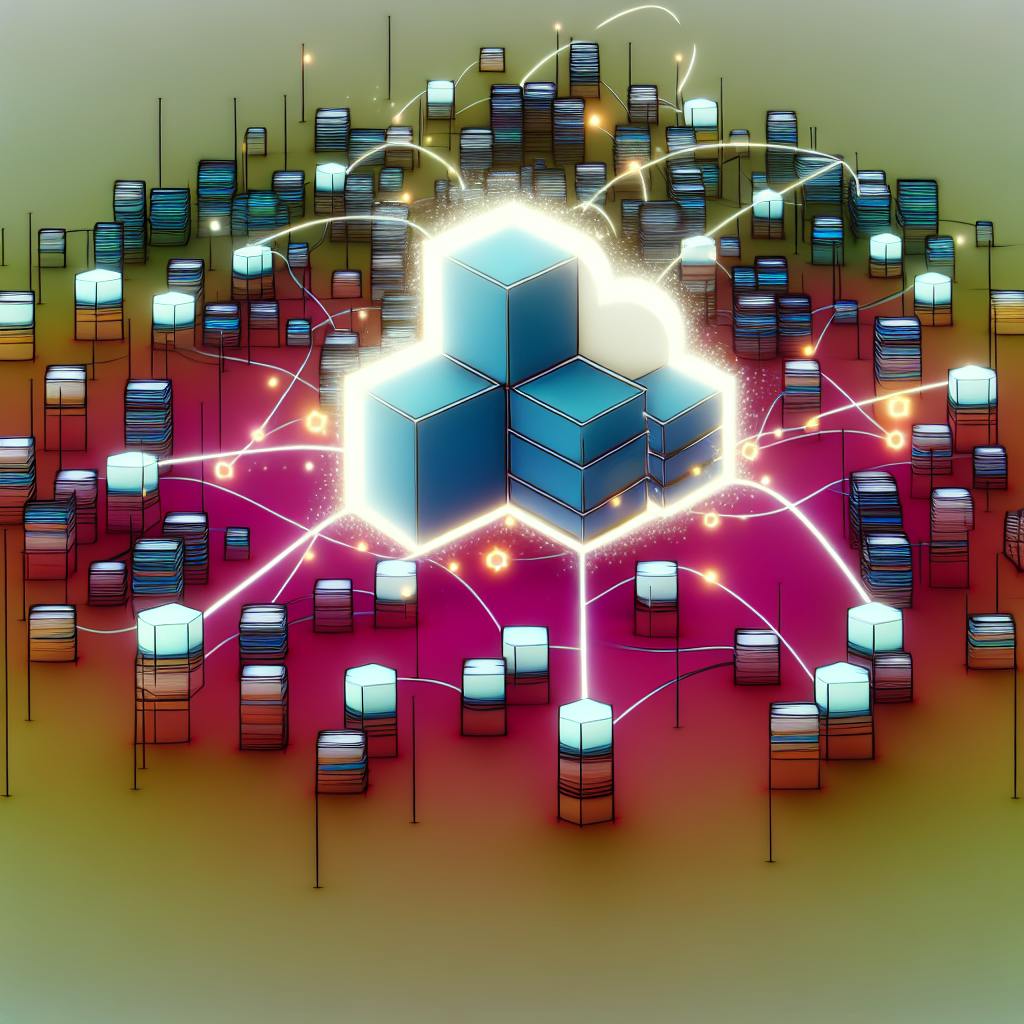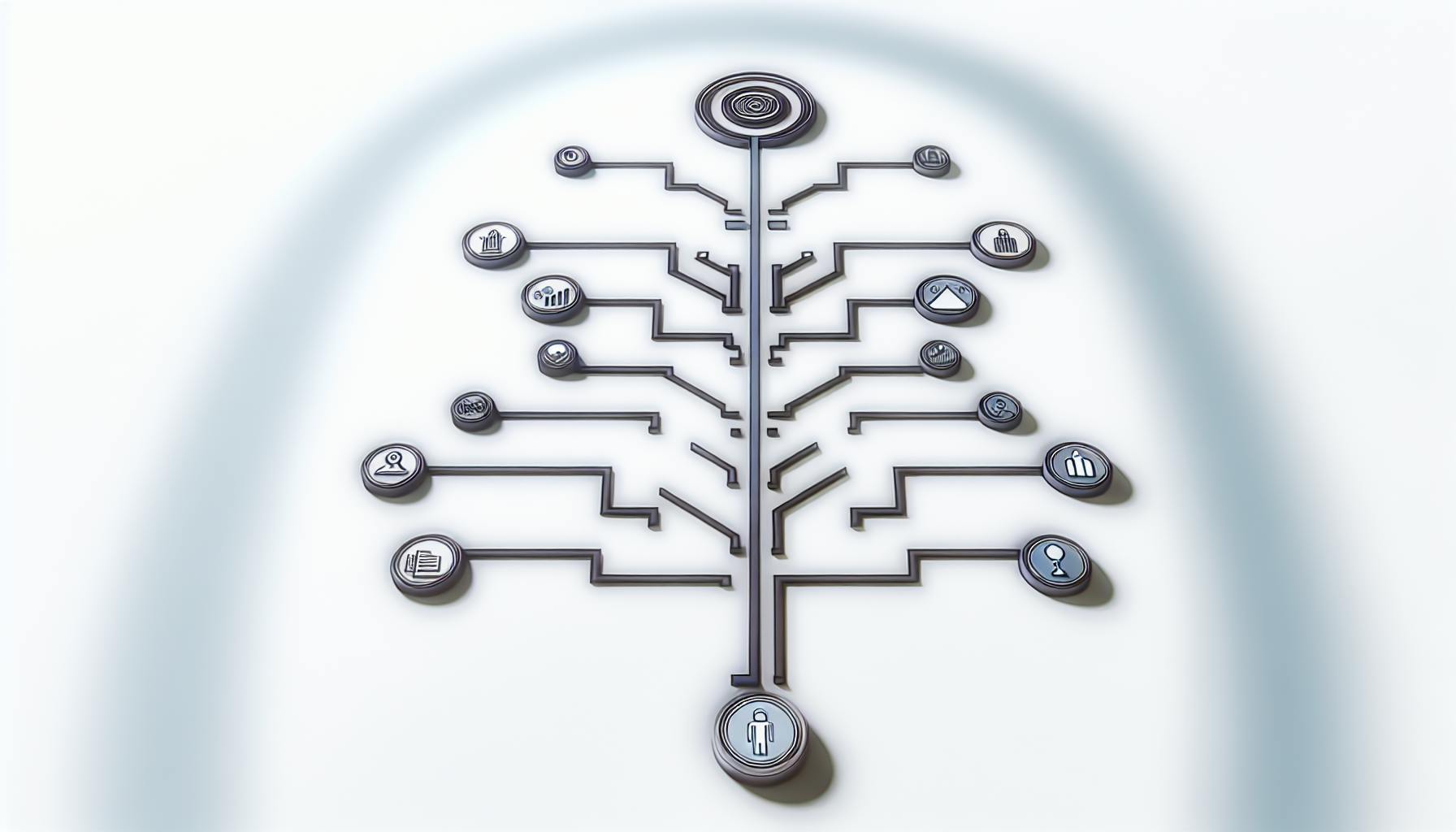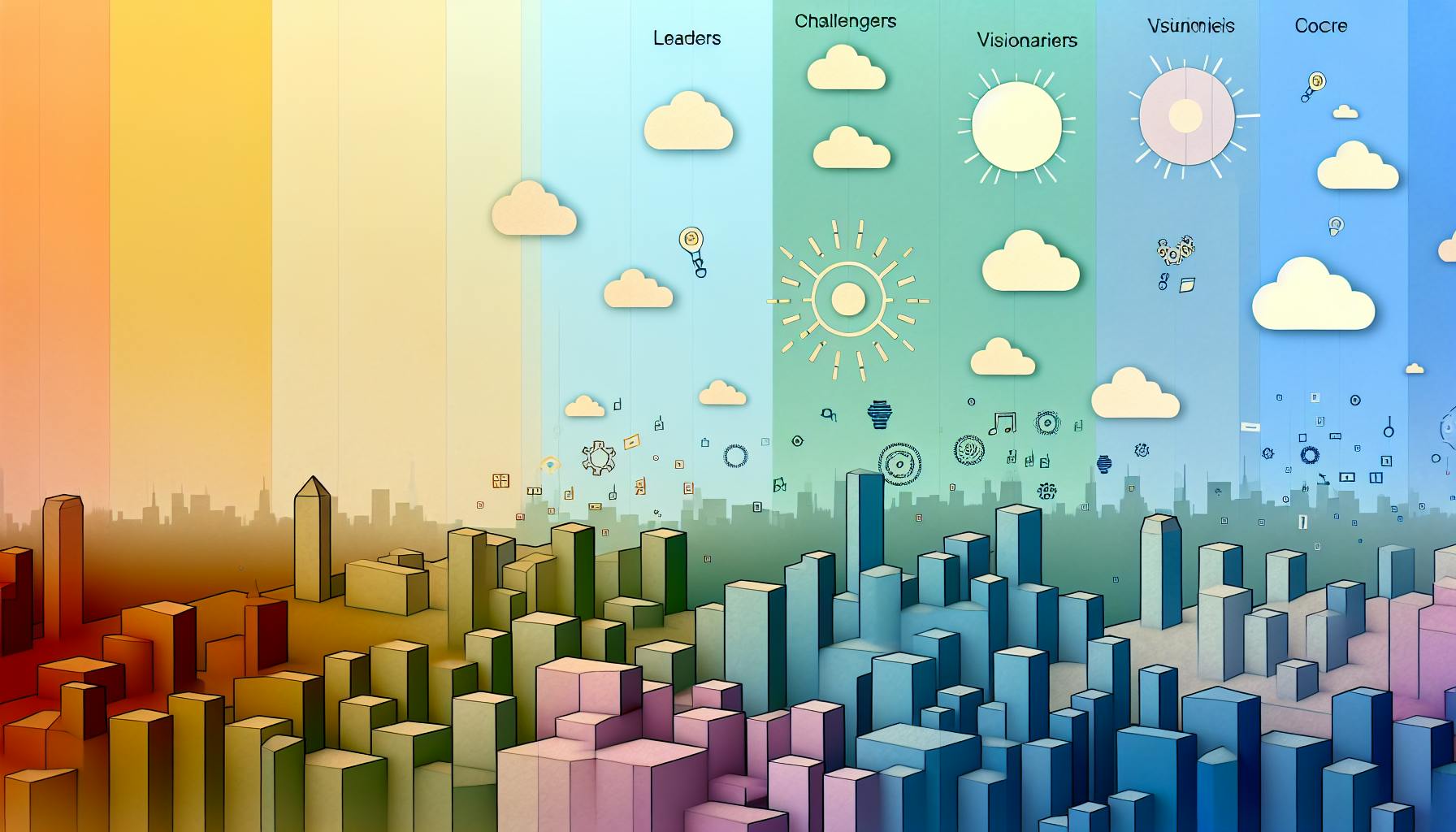Bubble is a leading no-code platform that empowers you to build web and mobile apps without coding knowledge. Here's what you need to know:
- Easy to Use: Drag and drop interface for app development.
- Quick Deployment: Launch apps faster than traditional coding methods.
- Cost-Effective: Save on development costs and time.
- Versatile: Suitable for creating a range of apps, from simple to complex.
- Secure: Built-in features to protect your data.
- Integration: Connects with other services easily.
In simple terms, Bubble is a tool that lets you create apps visually, manage data, set up workflows, and integrate with other services, all without writing a single line of code. Whether you're a business owner, designer, or student, Bubble opens up the world of app development, making it accessible and affordable.
Bubble - A Powerful No-Code Tool
Bubble is a tool that lets you create web and mobile apps without needing to code. Its main purpose is to make it possible for anyone to create software.
With Bubble, you can put together apps that do a lot of things, like storing information, setting up different actions, designing how it looks, and more, all without having to write code. It's all about making the process of creating an app something you can see and manage, making it easier for everyone.
Understanding No-Code Development
The Evolution of No-Code
No-code platforms have really changed the game over the last ten years, making it possible for more people to create software without needing to know how to code. Here's a quick look at how things have changed:
- Early 2000s: The first simple tools for building websites showed up. They were pretty basic and you still needed a coder to do anything complex.
- 2010s: Newer platforms came along that let you do more, like adding databases and automating tasks, even using AI. This meant you could make more complicated web and mobile apps without coding.
- 2020s: No-code got even better, with tools that could do a lot more. The COVID-19 pandemic made these tools even more popular as businesses and people looked for quick, easy ways to move online.
From just making simple websites to now being able to create big, complex apps, no-code has come a long way. It's all about making app creation quick and easy, without needing to code.
The No-Code Movement
The idea behind no-code is to let anyone make their own software, not just people who know how to code. Here's what it's all about:
- Inclusivity: Making it possible for anyone (like business folks, designers, or students) to create apps.
- Collaboration: Helping coders and non-coders work together better.
- Innovation: Making it easier and cheaper to come up with new ideas or start businesses.
- Productivity: Letting professional developers focus on the really tricky stuff instead of the same old coding tasks.
No-code tools are designed to make all this happen by using simple, visual ways to build apps, without all the complicated coding.
Comparing No-Code and Low-Code
No-code platforms are all about building apps without any coding. They use easy drag-and-drop tools.
Low-code platforms still need some coding. They're about making app development faster with ready-made parts.
Bubble is a perfect example of a no-code platform - you don't need to know any coding at all. But low-code platforms, like Appian and Mendix, still need you to code a bit.
So, while no-code and low-code are kind of similar, no-code platforms like Bubble take it a step further by getting rid of coding completely. This means more people can make apps.
Core Capabilities of Bubble
Bubble is a powerful tool that lets you build complex web and mobile apps without needing to know how to code. It offers a simple way to put your app together using drag-and-drop, handles the behind-the-scenes logic, stores your data safely, and even lets you connect with other apps and services easily.
Intuitive Visual Interface
Bubble has a straightforward visual interface that lets you design your app by simply dragging and dropping elements like text boxes, images, and buttons onto a page. You can change how these elements look and act without writing any code. This means you can see what your app will look like and how it will work right away, making it easier to tweak and improve.
Workflow Logic
Bubble lets you set up what happens in your app when users do something, like sign up or make a purchase, without writing code. You can visually create a series of steps (workflows) that manage these actions. This could include saving information, sending emails, or connecting with other tools. It's a straightforward way to control your app's behavior based on what you need it to do.
Data Storage and Management
With Bubble, you can keep all your app's information in a built-in database. Setting up where data is stored and how it's organized is easy—just drag and drop. You don't need to know any complex database code. Bubble also makes sure your data is safe and only lets the right people access it.
Third-Party Integrations
Bubble lets your app work with other services and tools, expanding what your app can do. For example, you can add payment options like Stripe or PayPal, send emails through MailChimp, or store files with Google Cloud. This means you can make your app more powerful by connecting it to other services you or your users already use.
By using Bubble, you get to focus on creating a great app without getting bogged down by the technical details. It's all about making app development accessible to everyone, regardless of their coding skills.
A Step-by-Step Guide to Using Bubble
Starting with Bubble is straightforward. Here's how you can sign up, make your first app, and get to grips with its main features.
Getting Started
- Visit Bubble.io and hit "Start Free Trial"
- Put in your email and make up a password to sign up
- Check your email and click the confirmation link Bubble sent you
- Now, you're all set to begin! Click "+ New Project"
When you open Bubble for the first time, you'll see a space where you can design, set up actions, and handle data. Let's dive into each part.
Bubble UI Builder
Bubble's design tool lets you put together good-looking apps with simple drag-and-drop:
- Use pages to lay out your content
- Add things like text, pictures, and buttons as elements
- Place elements neatly with grids or just place them wherever you like
- Change looks like color, font, and size right there
You can quickly make changes to your design.
Bubble Workflows
To make things on your app do stuff, like reacting to clicks, you'll use workflows:
- Link elements to actions
- Actions can change data, send out emails, or switch pages
- Even complicated stuff is done visually, no code needed
It's all about setting up what you want your app to do without writing code.
Bubble Data Storage
Your Bubble app comes with its own place to keep user data:
- Simply drag and drop to organize your data
- Link different kinds of data together
- Set who can see or do things with your data
- Bubble takes care of the technical stuff like hosting and making sure it runs smooth
You don't need to know anything about databases.
Adding Functionality with Plugins
You can add more features to your app with plugins from Bubble's marketplace:
- Log-in systems
- Payment options
- Text messaging
- Smart tech like AI
- And lots more
There's a plugin for almost anything extra you might want your app to do.
Deploying Your App
Getting your Bubble app out there is simple:
- Use Bubble's own cloud service
- Add your own website name
- Put it on app stores
- Or, show it on your website
Launching your app is straightforward with just a few clicks.
Bubble makes creating an app easy and doesn't require any coding. With these basics, you're ready to start making your ideas a reality!
sbb-itb-3a330bb
Real-World Examples Built with Bubble
Bubble has helped people from different fields make web apps without needing to code. Here are some examples of what people have built using Bubble:
Food Delivery Service
A new company making it easy to order food online built their test app with Bubble. What they made:
- Easy ways to order and pay with Stripe
- A dashboard to watch your order in real time
- A system to help drivers find the best routes
- Tools for restaurants to manage menus and what they have in stock
Using Bubble, they could quickly try out new ideas and make their app better based on what users said.
Digital Marketplace
Someone who wanted to help people buy and sell old things made a marketplace online using Bubble. It has:
- Profiles for sellers and tools to manage what they're selling and prices
- Safe payments and holding money until the deal is done
- A way for buyers to look up items, leave ratings, and review
- A system to handle commissions and pay sellers
Bubble let a single person build and start a working marketplace in just a few months without needing a team of engineers.
Scheduling Solution
A company making booking software for salons built their appointment system with Bubble. It includes:
- Syncing with calendars and setting up appointment times
- Keeping track of client info, their likes, and sending reminders
- Handling payments and making invoices
- A custom tool to look at business data
The easy-to-use no-code setup of Bubble helped this startup quickly make, test, and improve their tool based on what their clients said.
How Bubble Compares to Other No-Code Platforms
Let's look at how Bubble stands up against other no-code tools out there by using a simple comparison table:
| Feature | Bubble | Appian | Caspio |
|---|---|---|---|
| Visual development | ✅ | ✅ | ✅ |
| Workflow automation | ✅ | ✅ | ✅ |
| Data and database management | ✅ | ✅ | ✅ |
| Third-party integrations | ✅ | ✅ | ✅ |
| Completely code-free | ✅ | ❌ | ❌ |
Bubble stands out because it's totally no-code, meaning you don't need to know any coding at all. Let's break this down a bit more:
Visual Development
Bubble, Appian, and Caspio all let you build apps by dragging and dropping things on the screen, which is great if you're not a tech whiz.
Workflow Automation
They all allow you to set up what happens in your app when users do things, like filling out a form, without needing to code. It's a handy way to make your app do stuff automatically.
Data and Database Management
You can manage your app's data easily with these platforms, setting up where information goes and how it's organized without needing to dive into complex database stuff.
Third-Party Integrations
Connecting your app with other services like payment systems or email tools is straightforward on these platforms. This means you can add more features to your app without much hassle.
Completely Code-Free
The big difference with Bubble is that you don't need to code at all, ever. While Appian and Caspio might require some coding for more advanced tweaks, Bubble keeps it simple. This makes Bubble a go-to for anyone wanting to create apps without learning to code.
In short, Bubble does what the others do but keeps it 100% no-code, making it easier for more people to build apps.
FAQs
Can complex apps be built with Bubble?
Yes, you can definitely make complicated apps with Bubble. Here's why:
- Bubble lets you set up complex actions and decisions in your app without needing to code. This means you can create apps that do a lot of different things based on what the user does.
- You can manage and use data in your app easily, making it possible to have apps that adapt and change based on the information they handle.
- Bubble supports adding extra features through plugins and connecting to other services with APIs. This means you can add just about any functionality you can think of.
- Apps made with Bubble can grow with your needs, handling lots of users and data without slowing down.
- If you need to follow specific rules for handling user data, like for health information or personal data protection, Bubble has tools to help with that.
In short, Bubble gives you all the tools to make detailed and functional web and mobile apps without the headache of coding.
Is Bubble secure for sensitive data?
Yes, Bubble is built to make sure your apps are safe, especially when dealing with private information. Here's how:
- Encryption: Bubble uses strong encryption methods to keep data safe, both when it's being sent and when it's stored.
- Access control: You can set who in your app can see or do certain things. Bubble also keeps detailed records of who does what.
- Compliance: Bubble has features to help your app meet legal requirements for data protection.
- Data isolation: Your app's data is kept separate from other apps to prevent mix-ups.
- Vulnerability testing: You can check your app for security weaknesses and fix them quickly.
- Backups: Bubble keeps backup copies of your data to prevent loss.
With these features, you can trust Bubble with your app's sensitive information.
What is the learning curve for Bubble?
Learning to use Bubble is like picking up a new game - you start simple and get better as you go. Here's a rough guide:
- Getting started: You can learn the basics and start making simple apps in a few hours. Bubble's tutorials are really helpful.
- Adding core features: Within a week or two, you'll get the hang of more complex parts like managing data and using plugins. This lets you build more useful apps.
- Refining your skills: Give it a month or so, and you'll be good at making your apps run smoothly and do exactly what you want them to do.
- Ongoing learning: Bubble is always adding new stuff, so there's always something new to learn. The more you build, the better you'll get.
Bubble is great because it lets people at any skill level make something useful right away, and there's plenty of room to grow and make even more complex apps.
Conclusion
Bubble's Key Advantages
Bubble is really good because:
- Easy to use: You can drag things around to build your app. You don't need to know how to code.
- Smart workflows: You can set up what your app does, like sending emails or saving info, without any coding.
- Handles data well: You can make your own databases and keep your app's info safe and private.
- Works with other apps: You can connect your app to other tools and services to do more things.
- Quick to build apps: It's faster to make and change your app than with traditional coding.
- No coding needed: You can focus on making your app great without dealing with complicated code.
The Future of No-Code Bubble
No-code tools, like Bubble, are becoming more popular because they make building apps easy for everyone. Looking ahead, we might see:
- More professional developers using Bubble to save time and money on projects
- New uses for Bubble, like working with AI
- More big companies using Bubble to add to their existing systems
- Lots of ready-made designs, add-ons, and services to use with your apps
The no-code movement is all about letting anyone turn their ideas into apps. Bubble helps you do just that.


